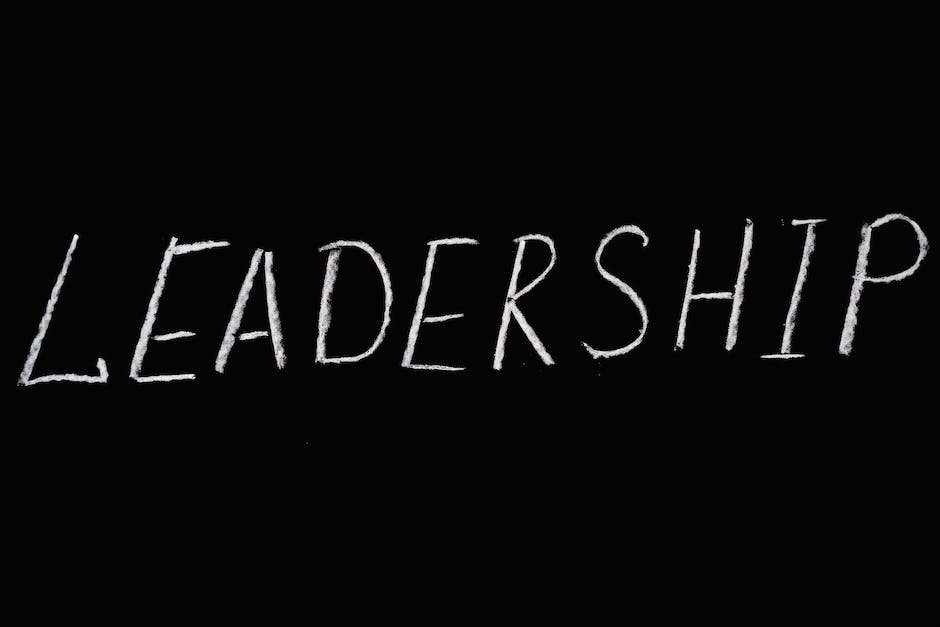Leadership is an essential element in driving success and fostering empowerment in diverse fields, be it politics, business, or social sector. With its roots embedded deeply in human history, it has gradually evolved to adapt and develop, redefining its theories and styles to meet ever-changing needs. This dynamic concept interweaves numerous qualities like integrity, empathy, and resilience, to name a few, fostering a tapestry of influential figures who have marked history with their exemplary leadership. However, these skills are not simply inherent, they require consistent growth, self-assessment and strategic thinking. Balancing the demands of a rapidly evolving landscape, leaders face numerous challenges that require adept decision making and adaptive strategies. As we strive to future-proof leadership, it becomes imperative to understand how a blend of various factors such as technology, social transformation, and increased diversity shape its future trajectory.
Understanding Leadership
Understanding Leadership: A Conceptual Overview
The assertion of leadership as a fundamental agent of change throughout history has never been more solidified. Leadership is a complex framework that transcends the borders of business, politics, and social communities, serving as the engine for growth, resilience, innovation, and cohesion in these various sectors.
Theories of Leadership
Numerous theories seek to demystify the concept of leadership, each offering a unique lens through which we can understand this dynamic phenomenon’s nature. From the trait theory, which stipulates that individuals inherit specific qualities and traits that make them better suited to leadership, to the behavioral theory, which focuses on the leader’s behaviors and actions, these theoretical models inform our perceptions of leadership.
Other notable theories include the contingency theory, which suggests that leadership effectiveness isn’t merely dependent on the leader’s style but also on the situation, and the transactional and transformational theories, which revolve around the manager-leader role and inspiration, respect, and the motive to exceed normal expectations, respectively.
Styles of Leadership
Alongside these established theories exist various leadership styles, each with a unique set of characteristics, strengths, and potential pitfalls. For instance, autocratic leaders retain primary control over all decisions, with little input from group members. Meanwhile, democratic leaders encourage group members’ involvement in decision-making processes, hence promoting a sense of ownership and commitment.
The laissez-faire, or hands-off, leadership style gives the highest degree of autonomy to followers, making it ideal for situations where followers are highly skilled, motivated, and capable.
A transformational leader, on the other hand, inspires and motivates followers to exceed their self-interests for the good of the organization, whereas transactional leaders reward or punish followers based on their performance.
The servant leadership style foregrounds the need for leaders to serve others, placing the team’s interests above their own, while the charismatic leadership style is fueled by the personal charm and persuasiveness of the leader.
Historical Evolution of Leadership
Historically, leadership has experienced several paradigm shifts. Early leadership forms were characterized by the dominant (“Great Man”) narrative, where leadership was the reserve of a select few, often tied to royal or noble lineages. With the evolution of society and the complexity of organizational structures, this narrative gradually gave way to more participatory and inclusive models of leadership.
In recent years, the emphasis on transformational and servant leadership styles mirrors society’s growing recognition of the importance of ethical and inclusive leadership. These relatively newer concepts prioritize empathy, emotional intelligence, and the nurturing of future leaders, reflecting the changing societal and organizational landscapes.
Exploring the Tremendous Impact of Leadership in Diverse Spheres
Leadership carries immeasurable importance, touching every aspect of our lives, encompassing business landscapes, political arenas, and our neighborhoods.
In the corporate world, outstanding leadership fuels innovation, molds the organization’s culture, and aligns everyone’s efforts towards the achievement of visionary goals. It fosters an environment ripe for teamwork, heightened engagement, and superior performance.
Within the realm of politics, leaders bear the voices of the constituents they represent, carving pathways towards the aspired societal and political transformation. They sculpt policies, influence legislations, and arbitrate disparities in the quest for a common good.
In community settings, leaders bring people together under a communal purpose or objective, encourage community advancement, and can play a pivotal role in fostering social transformation. They cultivate feelings of unity and collective efforts, elements critical to any prospering community.
Essentially, leadership can be viewed as a delicate balance of art and science, incorporating the understanding of various theories and styles, knowledge of changing historical contexts, and implementing this knowledge across diverse areas. Effective leadership, irrespective of its style, is undeniably the cornerstone of prosperous business, political, and social endeavors.

Qualities of a Good Leader
Identifying a Stellar Leader: Unraveling the Key Traits and Characteristics
Leadership is a unique amalgamation of traits, skills, and behaviors. Effective leadership is dynamic, continually adapting to shifting scenarios and interactions with team members. Let’s delve into some of the vital characteristics and qualities that shape a distinguished leader.
Integrity: The foundation of trust
Integrity is an essential quality of a leader, serving as the bedrock of trust between the leader and their team. Leaders with integrity consistently demonstrate honesty, humility, and respect, ensuring that their actions align with their words. When leaders display high levels of integrity, it establishes a culture of trust and transparency within the team.
Consider the example of Warren Buffett, the Chairman, and CEO of Berkshire Hathaway. Buffett is renowned for his strict adherence to ethical standards in business. His unyielding integrity has fostered a high level of trust among his employees, investors, and clients, significantly contributing to Berkshire Hathaway’s success.
Empathy: Understanding and validating others’ experiences
Empathy is a critical leadership quality that fosters an environment where all team members feel valued and understood. Empathetic leaders can perceive and understand the emotions of their team members, which improves communication and strengthens professional relationships.
An empathetic leader garners respect and fosters a workplace culture where employees feel comfortable expressing their thoughts and feelings. One such leader is Oprah Winfrey, who is known for her deep understanding and validation of people’s experiences, connecting with them on an emotional level, and giving them a voice.
Emotional Intelligence: The ability to manage one’s own and others’ emotions
Emotionally intelligent leaders are able to perceive, understand, manage, and use emotions to facilitate high levels of collaboration and productivity. They display great self-awareness, self-regulation, motivation, empathy, and social skills.
Through their emotional intelligence, leaders like Satya Nadella, CEO of Microsoft, can inspire their teams, navigate through challenging situations, and foster a positive, inclusive work environment.
Resilience: Staying strong in the face of adversity
Resilience is the ability to withstand and recover quickly from difficult situations. A resilient leader remains positive and composed even in the face of adversity. They are able to cope with unforeseen challenges, adapt to change, and drive their team towards recovery and growth.
Take the example of Mary Barra, CEO of General Motors, who, despite taking the helm during a difficult time, steered the company through various crises with her resilience and transformational leadership, driving improvements and maintaining a positive culture.
Vision: Crafting and communicating a compelling future
A leader with a clear vision can guide their team towards a common goal, providing a sense of purpose and direction. They develop a strategic plan and work collaboratively with their team to bring this vision to life.
Visionary leaders like Elon Musk, CEO of Tesla and SpaceX, have the ability to imagine and communicate a compelling future, inspiring their team to innovate and strive for exceptional performance. Musk’s powerful vision has positioned his companies at the forefront of technological advancement.
Summarizing Leadership Qualities
Primarily, qualities such as integrity, empathy, emotional intelligence, resilience, and vision are the defining aspects of an exemplary leader. It’s the leaders who possess these traits who often successfully build competent, effective teams and steer their organizations towards prosperity.

Photo by krakenimages on Unsplash
Developing Leadership Skills
Delving Deeper: A Broader Perspective on Leadership
Leadership isn’t merely a fancy title—it’s a responsibility that necessitates a level of understanding, empathy, strategic thinking, and most importantly, the capacity to inspire others to achieve their best work. An authentic leader displays resilience when guiding others through obstacles, and they possess the vision to foster and facilitate growth and innovation among team members. Cultivating these leadership skills can significantly stimulate both personal and professional development.
Self-Assessment: The Starting Point
For any individual to enhance their leadership skills, self-assessment serves as an essential first step. Through self-assessment, individuals can gain insights into their strengths and weaknesses. Recognizing personal capabilities and being open about areas that need improvement paves the path for becoming a dynamic leader.
Tools such as psychometric tests, 360 degree feedback, and executive coaching sessions offer valuable insights in self-assessment. Each of these tools presents the individual with results that can spur growth whilst developing leadership abilities.
Skill-Building Techniques: Polishing Leadership Capabilities
Apart from being familiar with strengths and weaknesses, leaders need to continuously work on nurturing certain skills. Some essential leadership skills include strategic thinking, effective communication, conflict resolution, decision-making, and team building.
Strategic thinking involves understanding the big picture and formulating effective strategies that align with long-term goals. Training programs such as strategy and innovation courses can help emerging leaders improve their strategic thinking.
Effective communication is another skill of paramount importance in leadership. This isn’t limited to verbal communication but includes body language, formal and informal written communication, and listening. Workshops focusing on public speaking, negotiation, and interpersonal skills can contribute to better communication.
Similarly, leaders often face conflicts and crises, and ability to manage them determines success. Conflict resolution training programs and stress management workshops can provide the necessary tools to handle such situations.
Notably, a leader’s primary role is decision-making where the stakes might be high, and the consequences, serious. Training programs like decision analytics, risk management, and problem-solving provide essential skills in this area.
Team-building is undoubtedly a critical skill for effective leadership. It involves understanding individuals’ strengths and assembling them into a cohesive team that works toward common goals. Team dynamics workshops can be fruitful for learning these skills.
Self-Improvement Strategies: Cultivating a Leadership Mindset
Leadership skills cannot be wholly developed through training programs alone. Personal commitment to self-improvement and continuous learning also plays a significant role. Reading about successful leadership styles, attending leadership talks, learning new technologies, and staying updated about industry trends can all contribute to a leadership mentality.
Besides, encouraging feedback, maintaining a positive attitude, upholding ethics, and demonstrating empathy towards teammate concerns are traits that should be consciously cultivated for effective leadership.
Lasty, conceptualizing a personal leadership philosophy and reevaluating it periodically can ensure consistent growth and adaptability in leadership. This philosophy could be a framework of the values, beliefs, and principles that guide one’s leadership style.
Transforming Leadership Theories into Practice
Acquiring leadership skills involves a combination of comprehending theories and implementing them in practical situations. Methods such as role-playing activities, group dialogues, mentor-mentee relationships, and job-role switching are typically used for translating leadership attributes from the conceptual level to real-world scenarios.
No matter an individual’s position in the professional ladder, honing leadership skills are an essential requirement in our relentlessly evolving global economy. By dedicating time and energy in learning and cultivating these skills, one can ready themselves for a multitude of roles and effectively overcome a variety of professional hurdles.

Challenges in Leadership
Obstacles in Leadership: Thriving Amidst a Diverse Set of Challenges
Pioneering in a leadership role is multifaceted, demanding, and subjected to consistent changes. Irrespective of the organization, industry, or nation, leaders invariably encounter an array of formidable obstacles that mandate proficient management, adept decision-making, and ethical discernment. Some of these primary hurdles encompass managing transformations, resolving ethical quandaries, addressing performance-related conflicts, and preserving a harmonious work-life environment.
Change Management: Guiding Teams Through Transition
Change is inevitable, and in a rapidly evolving global economy, it is imperative that leaders are able to effectively manage change within their teams and organizations. Change can encompass various scenarios: from company-wide transformation programmes to minor modifications in team structure. To handle this smoothly, leaders must clearly communicate the need for change and outline the actions required by each team member. This minimizes resistance and increases engagement in the change process.
Ethical Dilemmas: Choosing the Higher Path
Ethical dilemmas arise when leaders face situations where different decisions could be considered morally correct. The challenge is to make choices that align with both the organization’s values and the personal values of its members. Ethical leadership means taking responsibility, fostering an ethical climate, and demonstrating personal integrity. Experts suggest that ethical leaders need to create clear ethical codes, provide ethical leadership training, and make a commitment to social responsibility.
Performance Issues: Maintaining High Standards
Dealing with performance issues is a common challenge for leaders. It’s crucial that leaders address these issues promptly and constructively, rather than allowing them to persist and negatively impact the team or the organization. Establishing clear performance expectations, offering consistent feedback, and providing resources for improvement are critical steps in managing performance issues.
Work-Life Balance: Striking the Right Balance
Balancing work and personal life is another significant challenge for leaders. Striking a balance between delivering results at work and maintaining a healthy personal life can lead to better productivity, increased work engagement, and enhanced well-being. Leaders should encourage relaxation and recovery periods, support flexible work arrangements, and foster a culture that respects personal and family time.
Solutions Supported by Research and Expert Advice
Overcoming these challenges requires a thoughtful approach underpinned by research and expert advice. Adaptive leadership theories suggest that leaders need to be flexible, responsive, and capable of navigating complex scenarios and evolving demands. Further, leadership training programs and development initiatives can help leaders acquire essential skills and strategies for managing change, resolving ethical dilemmas, dealing with performance issues, and promoting work-life balance.
The idea of leadership often invokes images of individuals overcoming daunting challenges. But when armed with a deft blend of effective tools, strategic foresight, and a robust mindset, these seeming obstacles can quickly become conduits for growth and progress. This is because true leadership doesn’t aim to eradicate obstacles, but harnesses them to fuel the journey towards success.

The Future of Leadership
In today’s ever-evolving world, the contours of leadership are continually being reshaped by technology, societal paradigm shifts, and a focus on diversity and inclusion. These elements create a climate where traditional forms of leadership are insufficient, necessitating that the modern leader is adaptable and ready to embrace this dynamic landscape.
The advent of technology has brought about significant changes in leadership. Artificial intelligence, data analytics, and other digital tools are being integrated into decision-making processes to improve operational efficiency and performance. However, these advancements have also prompted leaders to chart new territories, posing both challenges and opportunities.
Leaders of the future will need to upskill and reskill, creating a culture that encourages continuous learning. They will have to lead the digital transformation in their organizations, steering away from traditional, siloed structures towards more collaborative, digitally fluent teams. The future leader must have a strong understanding of digital strategies to make strategic decisions and drive innovation.
Contemporary societal norms are vastly different from what they were a few decades ago. Today’s society demands transparency, inclusivity, and cultural sensitivity from its leaders. With the rise of social media, the manner in which leaders interact with their teams has shifted dramatically, requiring them to excel in virtual communication and remote team management.
Future leaders will be expected to prioritize emotional intelligence, empathy, and mental health in the workplace, establishing a humane approach to leadership. They will need to foster an environment that allows individuals to thrive, while ensuring productivity and performance are not compromised.
Diversity and inclusion in leadership have become focal points in recent times. Multiple perspectives, increased creativity, and enhanced problem-solving abilities are some benefits of diverse leadership teams.
Preparing for future leadership necessitates the breaking down of barriers and biases, creating workplaces that celebrate diversity and inclusivity. Embracing diversity will be a key differentiator for future leaders, as it fosters innovation and competitive advantage.
In conclusion, the future of leadership will demand adaptability, flexibility, continuous learning, digital fluency, emotional intelligence, empathy, and inclusivity.
Leaders should proactively embrace these changing dynamics, seeking opportunities for continuous development. It is also vital to develop next-generation leaders who embody these values, equipping them with the capabilities necessary to navigate the future of work. By learning and adapting, individuals can prepare to lead in a future that is being continuously redesigned by technological advancements, evolving social norms, and increasing diversity.

Mastering leadership is a continuous journey, with every step providing a new opportunity to learn, to grow, and to enhance ones’ skillset. Embracing the beneficial characteristics of a great leader, simultaneously navigating through the consequential hurdles and challenges, is an integral part of this journey. While some leaders are born, many are made through rigorous investment in self-development and learning. As we shift towards an era marked by rapid advancements and changing social norms, the essence of leadership stands at a crossroads of transformation. This transition highlights the importance of keeping up with the changing tides, continually sharpening our leadership skills, enriching our knowledge base, and projecting a vision that is ready to take on the future.